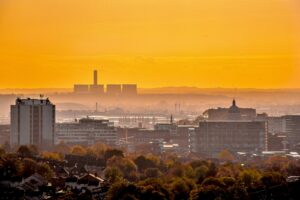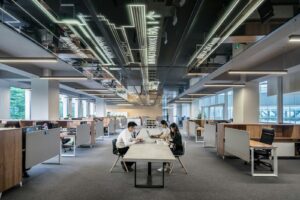The way spaces are lit can reinforce levels of inequality in urban areas, a new report argues.
Social housing estates are brightly lit to allow for better CCTV surveillance and the prevention of antisocial behaviour and crime; whereas wealthier neighbourhoods are lit in a more aesthetically pleasing manner.
According to the LSE’s Configuring Light research programme, this intensifies a sense of segregation between urban areas and leads to high costs for social housing lighting.
Don Slater, associate professor of sociology at LSE and co-founder of Configuring Light, said: ‘While not all urban spaces need highly aestheticized lighting schemes, good lighting design can help build social inclusion and civic life across urban spaces and create places that are engaging, accessible and comfortable for everyone who shares them.’
Mona Sloane, co-founder of Configuring Light, added: ‘Lighting can label…
















